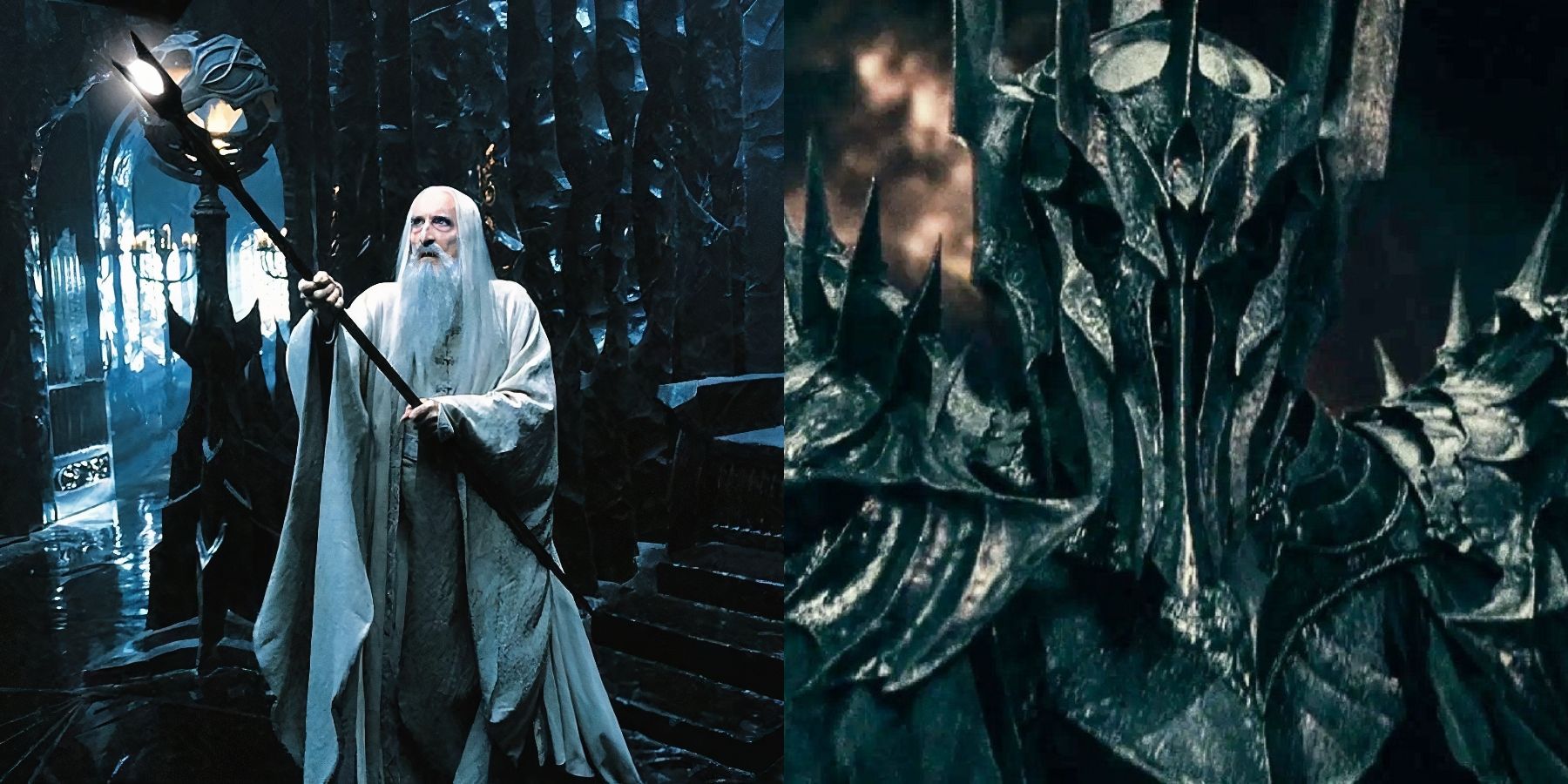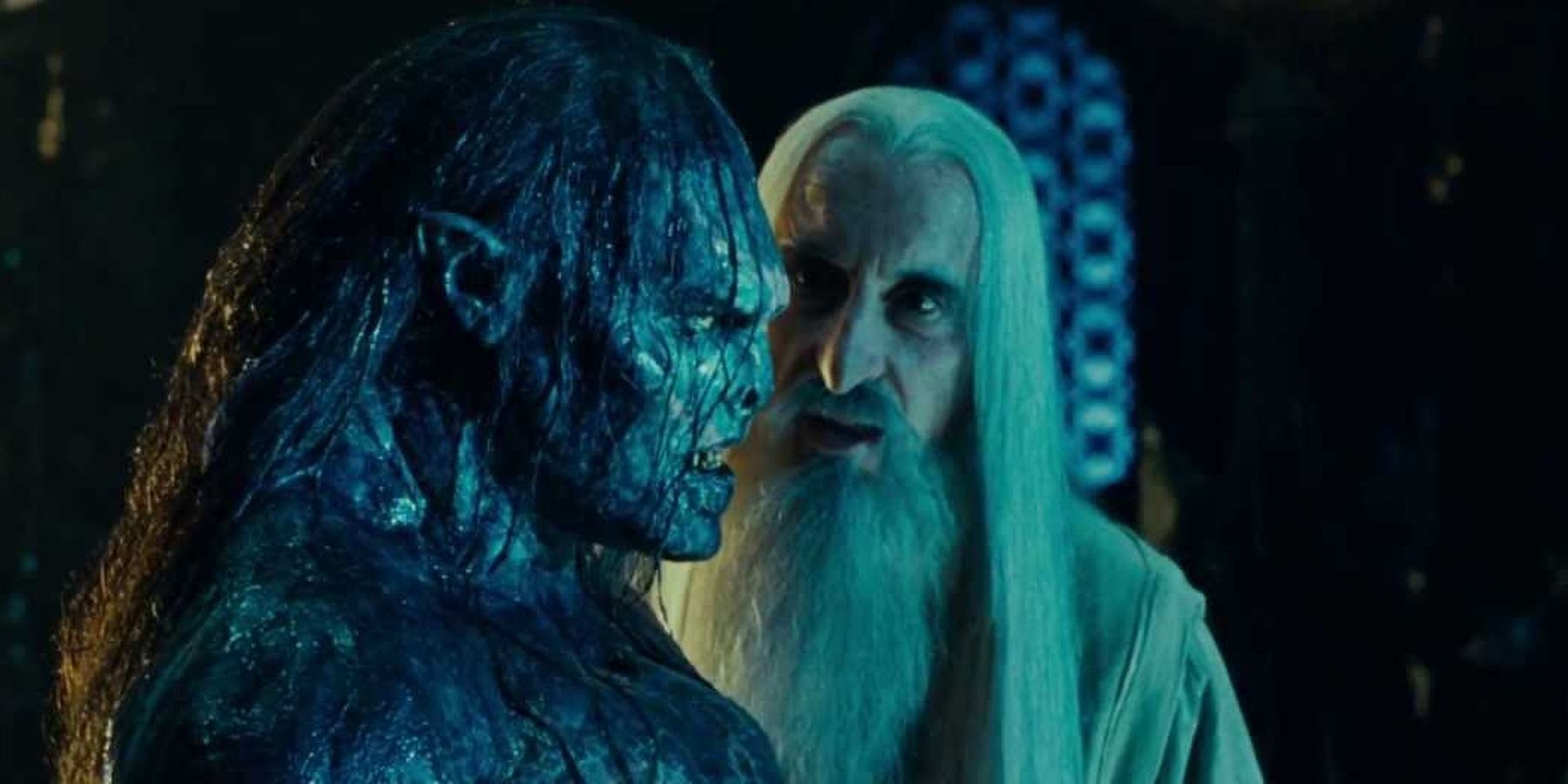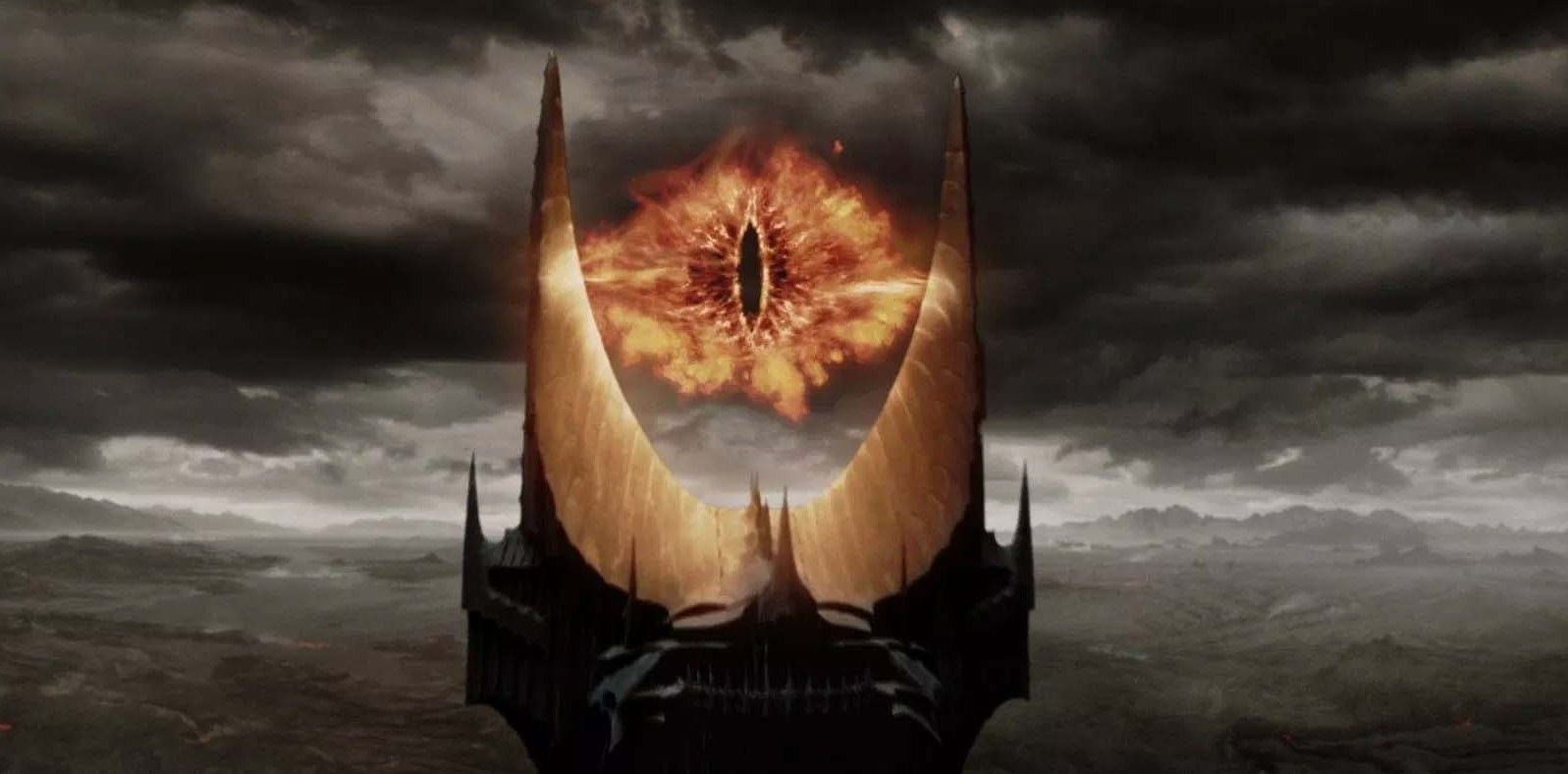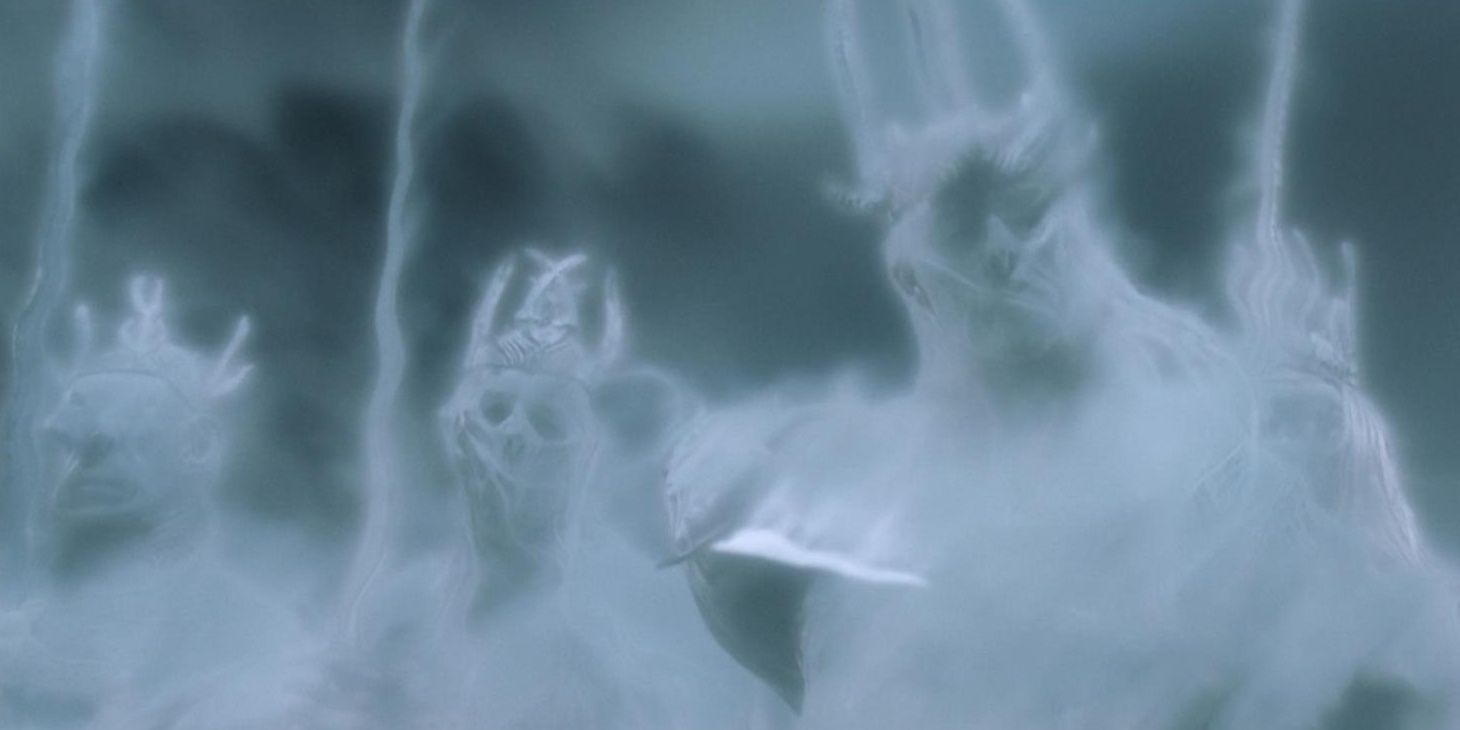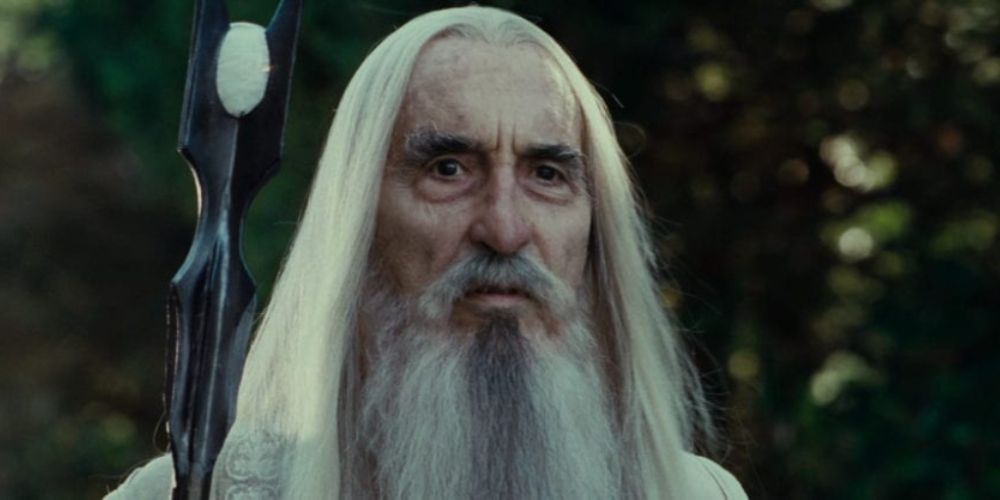Many Lord of the Rings fans recall the moment in the Fellowship of the Ring when Gandalf finally learns for certain that Saruman is a traitor. Though many fans may not be aware, Saruman’s betrayal began far before this time in the story.
To truly understand the slow festering betrayal, it’s important to first look at Saruman’s evolving role in the timeline of Middle Earth. By looking at the duration of Sarumnan’s existence in this world, fans can clearly see how the betrayal was less of a split decision and more of a continuous decline.
Much of Saruman’s background information is found in Tolkien’s books but it’s important to note that Saruman appears considerably more often in the Lord of the Rings films than in the book series. In part, this is due to the fact that Tolkien struggled with writing Saruman’s character in the early parts of the book before using him as a tool to close the greater story arc. It’s possible Peter Jackson considered this and wanted to give more attention to a character that plays such a big role. Regardless, to fully understand Saruman’s decline, fans must consider some details that the films left out.
Saruman’s story really began when he was the leader of the noble Istari, who were selected by the Valar to fight back against Sauron. As Saruman became more powerful leading this group, he also became more hungry for power. He soon began to desire the power that Sauron possessed and wanted to obtain it for himself.
In the timeline of the films, first, Gandalf becomes aware of Sauron’s presence in Dol Guldur. Gandalf takes this information to the White Council, who-- under Saruman’s influence-- vote against attacking Sauron’s hiding place. This action was the first event to peak Gandalf’s suspicion of Saruman.
In actuality, Saruman was already aware of Sauron’s presence there and was covering for the evil presence while buying himself time to locate the ring. When Saruman discovers that Sauron wasn’t sharing all of his knowledge on the ring’s location, he agrees with the White Council in deciding to go through with the attack on Sauron’s lair. Sauron is driven out of his hiding place and Saruman is able to conceal his secret.
When Sauron makes his return to Middle Earth, he seeks out Saruman, using his powers over the wizard to make him a sort of minion. This is the significant moment where the alliance is made. There is a battle of wills and powers between the two forces but ultimately, a verbal agreement is made.
Though Saruman is once again working under the power of Sauron’s shadow, he still finds himself craving the power of Sauron’s ring. In response, Saruman retreats to Isengard and begins secretly building up an Orc army to stir up trouble.
Saruman uses his Orcs to try to discover the location of the ring. While Saruman is particularly careful in covering his tracks, he is only successful in keeping his secret from the White Council members. Sauron, on the other hand, was always aware of Saruman’s betrayal and hunger for the power of the ring. Sauron did nothing to stop him because he felt he could still benefit from Saruman’s mischief.
By the next time that Gandalf comes to Saruman seeking help and sharing information about the ring, Saruman finally admits his alliance with Sauron. He declines helping Gandalf and instead, asks the grey wizard to help him, making the darkness of his heart clear. In this moment Saruman is so tainted by the darkness of his power that his identity as the White Wizard is abandoned.
Of course, Gandalf refuses to play any role in Saruman’s pursuit of power and as a result is held prisoner in Isengard. Gandalf pieces everything together as he waits. When he is finally saved by one of the Great Eagles, he immediately seeks out the White Council to update them on all that he’s learned about Saruman.
The Nazgul stop Saruman in his pursuit of the ring to question him about the location of the ring. Saruman denies knowing anything and points them toward Gandalf for answers. However, the Nazgul soon discover that Saruman has lied to them. This makes it clear that Saruman has no allegiance to anyone but himself. Some believe that at this point in the story, Saruman planned to make amends with Gandalf but when he discovered that the wizard had escaped, he felt forced to stick to his original decision.
Now feeling stuck in the alliance to himself, Saruman abandons any attempt to fake alliances and puts full effort into searching for the ring. He sends several spies and armies of Orcs to do his work. Eventually the forces of the ring bearers and the Ents come together in an attempt to take down Isengard.
Being captured, Saruman makes a last attempt to stop Gandalf and the party of the ring but he is unsuccessful and is captured. Gandalf offers Saruman a final chance at redemption but Saruman chooses his pride, declining the opportunity. In response, Gandalf the White breaks his staff, taking his power away.
What we don’t see in the movies is that Saruman is later released and hides away in Hobbiton, working as a petty criminal. He finally meets his end when he is murdered at Bag End by Grima Wormtongue. In the movie, Saruman falls after being stabbed and is impaled by a machine right before Legolas shoots Grima, ending Saruman’s involvement in the story much sooner.
With all of this examined, it’s safe to say that Saruman only made the alliance with Sauron to benefit himself. He became so greedy for power that he was willing to manipulate, use, and deceive anyone he had to in order to obtain it. Of course with Tolkien, Saruman’s struggle doesn’t just have a surface level meaning.
Saruman makes the decisions that he does in the story to represent corruption as a result of insistently seeking unattainable knowledge. In fact, Saruman actually means “man of skill or cunning.” Several fans of the books and movies connect Saruman’s greed for power to society’s reliance on technology, which is evident through all of the machinery used in Isengard. As a result of growing up with industrialization in the first part of the 20th century, Tolkien was not a fan of such technological advancements that he felt contributed to imperialism.
Considering that Saruman’s betrayal worsened as he bought more into the power and knowing what Tolkien meant him to symbolize in the Lord of the Rings storyline, it’s clear why Saruman allied with Sauron. Saruman decided long before agreeing to help Sauron that he would do whatever he must for power, making an alliance with Sauron look like nothing more than an opportunity. Looking at it this way makes it clear that it was power, and not Sauron, that brought Saruman to the point of making a deal with darkness.

